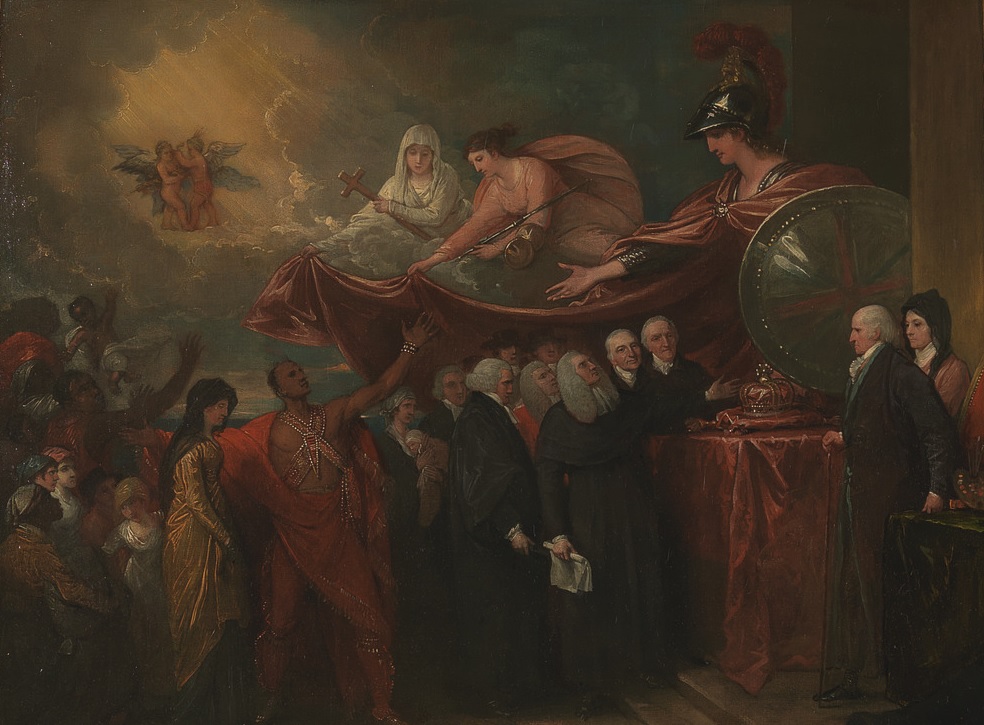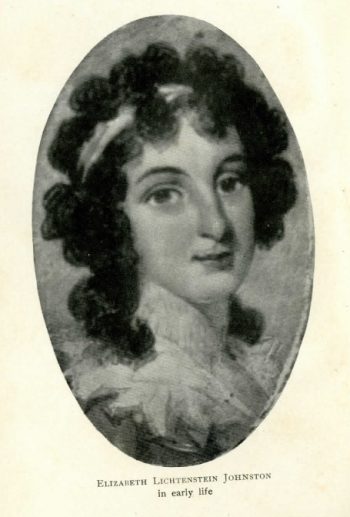Susan Vann, Brookwood School, Thomasville, Georgia
DESIGN LEVEL: Middle School-High School

Overview
Students will use both primary and secondary sources to examine two difference perspectives of the American Revolution. The class will be split into two groups (Loyalist v. Patriot), and each side will articulate the legitimacy of their stance. Once American independence is firmly established, students will decide where Loyalists should relocate based on: international events, where they felt comfortable and welcomed, and where they could afford to migrate.
Objectives
Students will:
- describe the social makeup of both Patriots and Loyalists,
- map geographic concentrations of each group within the American colonies,
- plot on a map (using Google My Maps: https://www.google.com/maps/about/mymaps/ ) the relocation patterns of Loyalists, using Elizabeth Lichtenstein Johnston as an example,
- explain what social, economic or geographic factors may have led a person to be a Loyalist or a Patriot,
- read and interpret primary and secondary documents, and
- answer/address the following essential questions:
-
- What factors determined whether a person was a Loyalist or a Patriot?
- What events intensified either Loyalist or Patriot feelings and actions at the outbreak of the war?
- Why did Loyalists feel compelled to leave the American colonies?
- In what ways could we consider the Loyalists who fled the American Colonies to be refugees? How are they similar/different to modern day refugees?
- What was Elizabeth Lichtenstein Johnston’s attitude toward the Patriots? How is this reflected in her writing?
- How is Elizabeth Lichtenstein Johnston representative of the Loyalist experience as they fled the American colonies?
Materials
- “What Happened to the British Loyalists After the Revolutionary War?” National Public Radio, July 3, 2015.
- “Elizabeth Lichtenstein Johnston, Part 10 of 17” Lecture by Maya Jasanoff. The American Revolution Institute of the Society of the Cincinnati.
- Recollections of a Georgia loyalist / Johnston, Elizabeth Lichtenstein, 1764-1848.; Eaton, Arthur Wentworth Hamilton, 1849-1937, ed. — New York ; London :: M.F. Mansfield & Co.,1901.
- The particular case of the Georgia loyalists : in addition to the general case and claim of the American loyalists, which was lately published by order of their agents ; February 1783 / Board of Agents for the American Loyalists. — [London: Board of American Loyalists, 1783].
- “Give Me Liberty Or Give Me Death,” Speech, Patrick Henry, March 23, 1775.
- Samuel Seabury, “Letters of a Westchester Farmer.” White Plains: Westchester County Historical Society, 1930.
Recommended Time
Three class periods, each period about 45-60 minutes, plus assessment.
Day 1:
Divide the students into two groups. One group will be Loyalist, the other, Patriot.
The Patriot group will choose an “orator” to read an excerpt from Patrick Henry’s speech. Students will read the text and decide among themselves which part best expresses the Patriot cause for independence.
Other members of the Patriot group will explain what they think the speech is expressing. Examples from prior knowledge and from Henry’s speech should be used to explain who the Patriots were, what motivated them, and what they hoped to accomplish through independence.
The Loyalist group will choose an “orator” to read an excerpt from Samuel Seabury’s “Letters of a Westchester Farmer.” Students will read the text and decide among themselves which part best expresses the Loyalist perspective.
Other members of the Loyalist group will explain what they think the speech is expressing. Examples from prior knowledge and Seabury’s speech should be used to explain who the Loyalists were, what motivated them, what they hoped to accomplish by remaining loyal, and how where they lived impacted their political views.
End the lesson with a wrap-up activity. Explain to students that the increasing tensions between Loyalists and Patriots at the onset of the American Revolution led to violence and the destruction of property. As Loyalists made up between 15% to 20% of the colonial population, many of the Loyalist minority will flee to other parts of the world. Loyalists will make international escapes to Canada, the Caribbean, Eastern Florida, and even back to Great Britain. Ask students to think about what Loyalists might have experienced one they reached their places of refuge.
Day 2
Have students listen to “What Happened to the British Loyalists After the Revolutionary War?” from National Public Radio, July 3, 2015.
Facilitate a class discussion based on the broadcast. Ask students what additional insight it provides in understanding the Loyalist experience during the Revolutionary War.
Divide the students into four groups labeled: “Loyalists who fled to Canada,” “Loyalists who fled to the Caribbean,” “Loyalists who fled to Florida,” and “Loyalists who fled to Great Britain.” Ask the groups discuss and answer the following questions:
- What kind of occupation did your group tend to have? Merchants? Artisans? Plantation owners? Small farmers? Tradesmen?
- Why do you think your group chose to escape to a particular place (Canada, Caribbean, East Florida, Great Britain)?
- What international dynamics of the war and broader global issues might have complicate the journey of Loyalists to their new homes?
- What did Loyalists experience when they arrived at their new destination? What hardships did they face?
As a wrap up activity, have students watch Maya Jasanoff’s “Elizabeth Lichtenstein Johnston, Part 10 of 17.”

Day 3
Divide students into pairs or groups of three, distribute copies of Recollections of a Georgia loyalist, page 9, and ask students to respond to and discuss the following questions:
- How old was Elizabeth when she wrote her recollections?
- How does the editor of her recollections describe her life?
- Where did Elizabeth go after she flees Georgia?
Using Google My Maps (https://www.google.com/maps/about/mymaps/), have students plot out Elizabeth’s journey based on the account of this book and the Jasanoff lecture.
Distribute the text of the letter from Lewis Johnston to his son, William (“Billy”) Johnston, husband of Elizabeth Johnston from Recollections of a Georgia Loyalist, pages 27 and 28, and ask students to respond to and discuss the following questions:
- What is the date of this letter? Where does to date fit in the timeline of the American Revolution?
- How does Lewis refer to his son William?
- From where is the letter written? Where is it being sent?
- What advice does Lewis give to his son?
- What reason does Lewis give for asking William not “to declare your sentiments?”
- What warning does Lewis give as to how William should respond to what others say?
- What “dictates” does Lewis implore William to follow?
Distribute the text of Elizabeth’s writings at the outbreak of the war Recollections of a Georgia Loyalist, pages 44-46, and ask students to respond to and discuss the following questions:
- Who does Elizabeth refer to as a “ragged corps?”
- What words does she use to identify herself and her family?
- What does Elizabeth say happens to those who refuse to join “the people?”
- How does Elizabeth describe her former teachers who became officers in the “rebel” army?
- How was Elizabeth’s father able to escape? Who does Elizabeth give most credit to for diverting the “rebels” in the pursuit of her father? How does she refer to him?
- What future Georgia governor was part of the search party who was looking for her father? What does this man’s “turning” represent to Elizabeth?
- What happens to Elizabeth’s family’s land and property?
Ask students to review the claims made by the Johnston Family to the British Government in The Particular Case of the Georgia loyalists and respond to/discuss the following questions:
- What claims did William and Elizabeth Johnston make? If none, why do you think no claim was made?
- When is the claim made? From where is made?
As a wrap-up and assessment, assign students the following two essay question prompts to be completed either at home or in school. Answers should be between 3-5 paragraphs.
- Write an argumentative essay about whether you would be a Loyalist or a Patriot during the American Revolution. Include evidence from primary sources, class discussions, and outside readings. Your writing should stress important terms, people, and events as examples and to support your argument.
- You are a Loyalist. Describe where you lived and what your occupation was while in the American colonies. Explain where you escaped to at the outbreak of war, and why you left your home. Include evidence from primary sources, class discussions, and outside readings to support your choice. Your writhing should also include important terms, people, and events.
Standards Addressed
COMMON CORE: English Language Arts Standards—History/Social Studies—Grade 6-8
Historical Analysis and Skills Development: Reading, Writing, Speaking, Listening; Writing: Key Ideas and Details; Craft and Structure: Integration of Knowledge and Ideas
UNITED SOCIAL HISTORY SOCIAL STUDIES GEORGIA PERFORMANCE STANDARDS (Georgia Department of Education):
SSUSH2a: “The student will trace the ways that the economy and society of British North American developed.” “…explain the development of mercantilism and the trans-Atlantic trade.”
SSUSH3b: “The student will explain the primary causes of the American Revolution” “…explain colonial response to such British actions as the Proclamation of 1763, the Stamp Act, and the Intolerable Acts….”
SSUSH4a: “The student will identify the ideological, military, and diplomatic aspects of the American Revolution.”
COLLEGE BOARD/ADVANCED PLACEMENT STANDARDS (AP U.S. History Curriculum Framework):
Key Concept 3.1: “The British attempt to assert tighter control over its North American colonies and the colonial resolve to pursue self-government led to a colonial independence movement and the Revolutionary War.”
- WOR-1.0: “Explain how cultural interaction, cooperation, competition, and conflict between empires, nations, and peoples have influenced political, economic, and social developments in North America.”
- NAT-1.0: “Explain how ideas about democracy, freedom, and individualism found expression in the development of cultural values, political institutions, and American identity.”
- POL-2.0: “Explain how popular movements, reform efforts, and activist groups have sought to change American society and institutions.”